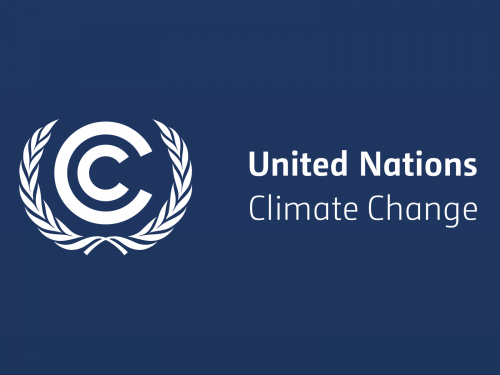
https://unfccc.int/news/new-public-registries-showcase-countries-climate...
Both registries for NDCs and ADCOMs were approved during COP 26 and serve as channels for information flowing towards the Global Stocktake of the Paris Agreement that is to take place every five years starting in 2023.
Patricia Espinosa, Executive Secretary of UN Climate Change, said: “The public registry is a great move forward in showcasing Parties’ climate actions and providing up-to-date and reliable information on them. It ultimately helps to promote national and global accountability and transparency towards climate commitments and actions.”
Daniele Violetti, Senior Director Programmes Coordination at UN Climate Change, added: “The documents in the new registries reflect the world’s pledges and aspirations to achieve the goals of the Paris Agreement. The registries enhance their visibility, simplify their submission, and will enable all stakeholder to access them in centralized locations.”
About the NDC registry
Launching the new public registry for NDCs signifies a crucial step toward implementing the work programme agreed upon during COP 24 in Katowice, Poland.
This public registry is the official channel to formally communicate NDCs under the Paris Agreement, acting as a fully transparent repository of NDCs where anyone can browse and look for information on what countries are doing to tackle climate change.
NDCs showcase countries’ climate targets, policies, actions and progress to reduce emissions and adapt to climate change across many sectors by, for example, decarbonizing energy supply through shifts to renewable energy, energy efficiency improvements, better land management, urban planning and transport.
Each Party to the Paris Agreement is required to submit an NDC highlighting what they intend to do to contribute to the international effort to keep the global temperature rise since pre-industrial times well below two degrees Celsius, with a preference to limit it to 1.5 degrees.
Under the Paris Agreement, countries must update their NDCs every five years, with each new round of NDC updates showing increased ambition. Mobilizing the necessary climate finance from private and public sectors and other multilateral cooperation is a prerequisite to ensuring more ambitious NDCs over time.
Considering the large gap between the emissions cut required to limit global warming to 1.5 degrees and the climate actions currently put forward by countries, the Glasgow Climate Pact in November 2021 called on all countries to revisit and strengthen their national climate targets by the end of 2022.
To date, all 193 Parties to the Paris Agreement have communicated at least a first NDC; 167 Parties have submitted a new or updated NDC as of 16 June 2022.
About the ADCOMs registry
The second further crucial public registry agreed at COP 26 - the Adaptation Communications Registry (ADCOMs) – communicates ways of adapting to the impacts of climate change.
The purpose of ADCOMs is to increase the visibility and profile of climate change adaptation. It also aims to strengthen adaptation action and support for developing countries, provide input to the Global Stocktake on the Paris Agreement, and enhance understanding of adaptation needs and activities.
ADCOMs can contain elements like information on impacts, risks and vulnerabilities, adaptation progress and results achieved, barriers, challenges and gaps to implementing adaptation, among others.
The ADCOMs can be submitted together with other communications or documents, including a National Adaptation Plan (NAP), a national communication, an NDC, or a biennial transparency report.










Add new comment